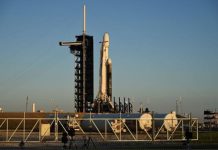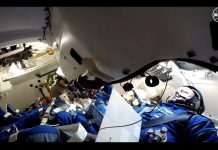
HILL AIR FORCE BASE, Utah, Sept. 21, 2023 (Gephardt Daily) — Utahns will be heavily involved when a capsule completes its 7-year mission Sunday in returning from an asteroid named Bennu to land in Utah’s west desert.
The landing site is somewhere in the 2,675-square-mile Utah Test and Training Range, which spans Box Elder and Tooele counties, bisected by Interstate 80, and includes parts of eastern Nevada.
Hill Air Force Base and UTTR personnel have a key role in tracking and recovering NASA’s first-ever asteroid sample return, according to the U.S. Air Force.
The spacecraft known as OSIRIS-REX (for Origins, Spectral Interpretation, Resource Identification and Security — Regolith Explorer), will drop the capsule off for an expected 8:42 a.m re-entry into earth’s atmosphere Sunday, according to the AF press release, the capsule hitting speeds of 28,000 mph. OSIRIS-REX will then head off to its next mission.
Radar and infrared cameras operated by personnel in the UTTR Mission Control Center at Hill will detect and track the capsule’s re-entry path. “The tracking data we have, combined with our radars and high-speed cameras, which can detect a heat signature, will help us locate the capsule and relay that information to the recovery team on the ground,” said Lindsay Carl, the AF range control officer for the mission.
The capsule’s final approach is by parachute, with recovery teams catching up with its landing by helicopter. Among the ground crew will be Stuart Wylie, a UTTR member and explosive ordnance disposal expert, who will serve as the on-scene commander for the mission at the capsule’s landing site, the AF said. “Wylie will be the first person to approach the capsule.”
“For decades,” Carl explained, “this have been a very active military test and training range. There could be unexploded munitions or fragments in the landing area. (Wylie) is very knowledgeable on the terrain and the potential dangers out there. He’ll keep the recovery team safe.”
NASA is inviting the public to take part in virtual activities ahead of the return of the capsule with its half-pound sample from Bennu. “This mission will help scientists investigate how planets formed and how life began, as well as improve our understanding of asteroids that could impact Earth,” NASA said on its web site.
Live coverage will begin at 10 a.m. EDT on Sunday, NASA said, and air on NASA Television (Ch. 388 on Comcast/Xfinity) and the agency’s website, as well as YouTube, X, Facebook, and NASA’s App.
The OSIRIS-REx mission was launched on Sept. 8, 2016, and reached the near-Earth asteroid 101955 Bennu on Dec. 3, 2018.
The spacecraft spent two years searching for a location on the asteroid to collect a sample and landed on the surface on Oct. 20, 2020.
NASA says the spacecraft will have to travel at a specific angle and speed in order to release the sample capsule into the atmosphere so that it lands in the area of the UTTR.





